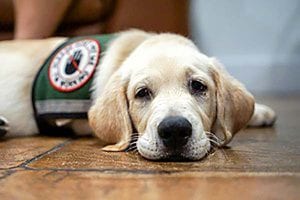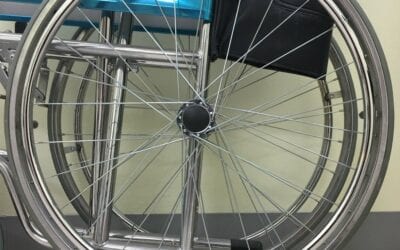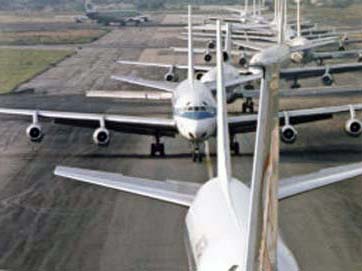New rules seek to close the loophole that allows pets to be considered fully service animals
 The Department of Transportation (DOT) released its proposed rule for airline transport of what have come to be called emotional support animals. This Notice of Proposed Rulemaking (NPRM) eliminates most loopholes used to carry normal pets as medical necessities.
The Department of Transportation (DOT) released its proposed rule for airline transport of what have come to be called emotional support animals. This Notice of Proposed Rulemaking (NPRM) eliminates most loopholes used to carry normal pets as medical necessities.
The DOT’s Air Carrier Access Act (ACAA) regulations regarding the transportation of service animals by air will change. Basically, emotional support animals (and pets traveling under that guise) will need certification similar to service animals. The proposed amendments to the current rules should ensure that citizens who have disabilities have access to transportation. And, that airline personnel and other passengers can travel safely without fear of untrained animals.
READ ALSO:The emotional support animals scam?
Pets will not be able to fly free — at least not easily
Basically, DOT eliminates the loophole that allows pets to be treated the same as fully-trained service animals. This loophole led to a dramatic increase in incidents involving untrained animals in the past few years.
Numbers showing more than 750,000 “emotional support animals” were flown in 2017. And more than 3,000 complaints have been made to the DOT about service animals on flights in 2018, an increase from 719 in 2013. Plus, the emotional support animals will be limited to dogs.
Here is the DOT NPRM wording
Read the exact wording from a summary of the proposed NPRM:
…the Department proposes to define a service animal, under its ACAA regulations in 14 CFR Part 382, as a dog that is individually trained to do work or perform tasks for the benefit of a qualified individual with a disability, including a physical, sensory, psychiatric, intellectual, or other mental disability.
Furthermore, this NPRM proposes to allow airlines to recognize emotional support animals as pets rather than service animals. The NPRM also proposes to allow airlines to require all passengers with a disability traveling with a service animal to complete and submit to the airline forms developed by DOT attesting to the animal’s training and good behavior, certifying the animal’s good health, and attesting that the animal has the ability either not to relieve itself on a long flight or to relieve itself in a sanitary manner. In addition, this NPRM would clarify existing prohibitions on airlines’ imposing breed restrictions on service animals and would allow airlines to set policies to limit the number of service animals that one passenger can bring onboard an aircraft.
This NPRM would also generally require service animals to be harnessed, leashed, or otherwise tethered. This NPRM also proposes requirements that would address the safe transport of large service animals in the aircraft cabin and would clarify when the user of a service animal may be charged for damage caused by the service animal. Finally, this NPRM addresses the responsibilities of code-share partners, among other provisions.
This new rule stops pet owners from using a rule loophole
Pets cost as much as $250 per round trip, while emotional support animals fly free. It’s a powerful enticement for pet owners to “game” the airlines.
Too many emotional support animals are causing serious problems for passengers. Last June, a Delta passenger in a window seat, where escape was impossible, was attacked twice by another passenger’s support dog weighing about 50 pounds. The passenger suffered facial lacerations and puncture wounds to his lip and gums. He needed 28 stitches to close his wounds.
The scam of having pets fly free is a danger for flight attendants, other passengers, and for other trained service animals. Allowing emotional support animals to travel as service animals became an abused loophole. This NPRM is directly related to that kind of consumer rule abuse.
ALSO ON TRAVELERS UNITED: Should emotional support animals bite or comfort?
Airlines, airports, pilots, flight attendants, disability organizations, and Travelers United worked to modify the system
Other groups teamed-up with the airlines and DOT on this new NPRM. Disability organizations, Travelers United, flight attendants unions, International Air Transport Association, Airline Pilots Association, airport organizations, and the Global Business Travel Association all supported the change in the rule. Now, the debates about specific changes will take place.
The teamwork and unified pressure presented to DOT pushed them to modify their initial rules. Last year, the Department released a clarification of its emotional support animals (ESA) rules and then released this NPRM. See a basic outline of changes that are being proposed.
- DOT’s definition of a service animal is similar to DOJ’s
- Service animals can be limited to trained dogs; no miniature horses or cats
- Airlines can require a health form as a condition of transportation
- Service animals will require a complete behavior and training attestation as a condition of transport
- Carriers can limit the number of service animals to two service animals — if there are two they both have to fit on the handler’s lap and / or within the handler’s foot space
- Service animals have to fit within the handler’s foot space
- Carriers can’t discriminate based on breed
- Passengers with a disability can be required to check-in at the airport prior to travel time required for the general public.
According to some flight attendant friends, “The days of Noah’s Ark in the air are hopefully coming to an end.”

Charlie Leocha is the President of Travelers United. He has been working in Washington, DC, for the past 14 years with Congress, the Department of Transportation, and industry stakeholders on travel issues. He was the first consumer representative to the Advisory Committee for Aviation Consumer Protections appointed by the Secretary of Transportation from 2012 through 2018.



